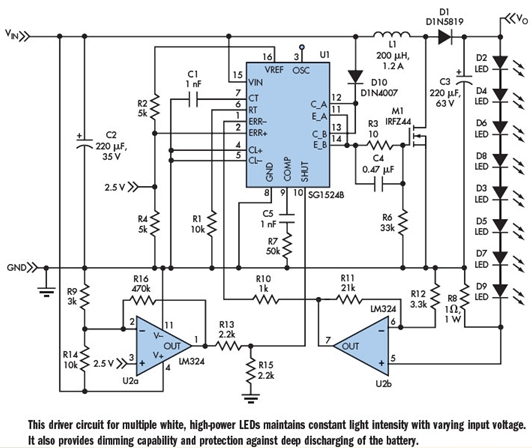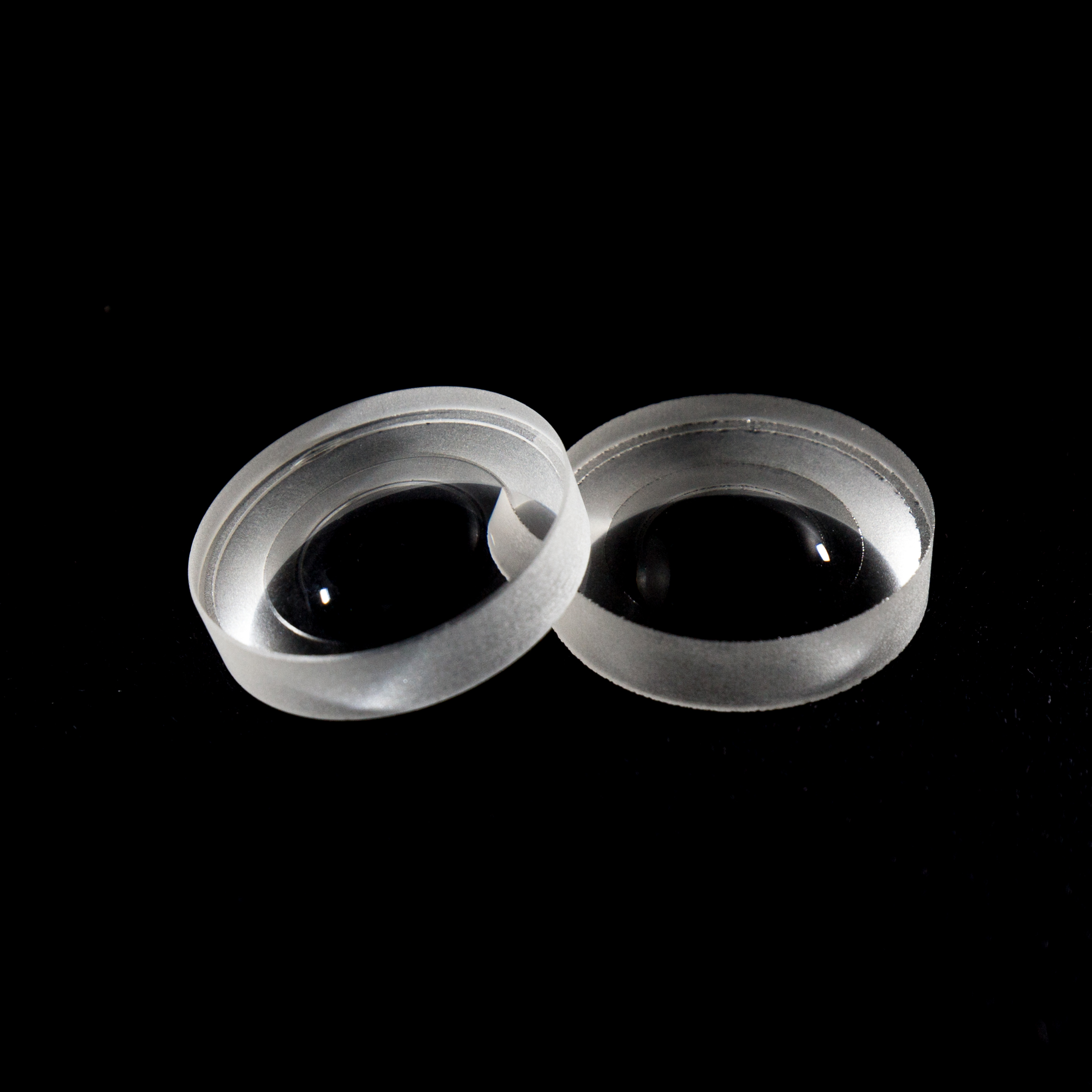In portable applications, white LEDs are often powered by sealed lead acid (SLA) batteries with a 12V standard output. The circuit shown in the figure uses a 12V input battery to power a string of white LED groups. It is characterized by low cost, high efficiency, brightness independent of battery voltage, dimming function, and protection of the battery. The driver circuit uses the SG1524 Pulse Width Modulation (PWM) switching regulator (U1) in the boost configuration. This configuration allows U1 to generate a maximum output voltage of approximately 40 V and can drive up to 11 1W white LEDs in series. Due to the high power consumption, the LED must be equipped with a corresponding heat sink. For a given operating frequency, the driver design includes the choice of inductor, input capacitor, output capacitor, switching transistor, and output diode. The working frequency is: The frequency chosen in this example is 100 kHz. The higher the frequency, the smaller the inductance, but the greater the switching loss. The battery has a voltage of 13.2V when fully charged and approximately 10.8V when fully charged. The voltage across the LED should be high enough to forward bias the LED at different input voltages. To ensure this, the required duty cycle is: V O = output voltage through the LED series; V D = diode voltage drop; V IN = minimum SLA voltage; V DS = MOSFET voltage drop. For an 8-LED series, the Schottky diode has V O = 28.8V, V IN = 11V, and V D = 0.4V. Ignoring V D S, the required duty cycle is 62.3%. U1 has two independent switching transistors, each providing approximately 100mA of current and a maximum duty cycle of 45% during operation. In order to achieve the desired duty cycle, the two transistors are connected in parallel. Since the current required by the LED exceeds 100 mA, an additional MOSFET is added. The average value of the inductor current is used to calculate the value of L1: If the ripple of the inductor current dI L is a certain percentage of the average current, then the maximum value of the inductor current is: If the ripple is 40% of the average current, I Lpk = 1.12 A. Therefore, the inductance value is: In this example, Equation 5 shows that when V IN is 11V, the minimum inductance is 184.3??H. The value of the output capacitor depends on the ripple of the output voltage, and the value of the input voltage depends on the maximum value of the current. To ensure stable illumination, the current through the LED must be monitored and maintained. To do this, the current can be converted to voltage by R8, R11 and U2b and fed back through the inverting terminal of U1's error amplifier. This negative feedback adjusts the duty cycle to stabilize the current through the LED. The brightness of the LED varies with R11. The operational amplifiers U2a and R9, R13, R14 and R15 monitor the battery voltage and turn off the LED as long as the battery voltage is below 11V, thus preventing deep discharge of the battery. Author: Santosh Bhandarkar, scientists and engineers, Indian Space Research Organization, Email address :
Meniscus lens is concave Convex Lens. The lens has an outer convex mirror and an inner concave mirror. If the outward radian is greater than the inward radian, the lens has a positive focal length and is used as a magnifying glass. Hengpu Photoelectric technology provides meniscus lenses without coating and coated with IR2 antireflection film. Germanium (GE) substrates are suitable for infrared applications.
Meniscus Lens,Spherical Lenses,Positive Spherical Lens,Negetive Spherical Lens Hanzhong Hengpu Photoelectric Technology Co.,Ltd , https://www.hplenses.com






Many people think that white LED is the future trend of lighting. Multiple LEDs connected in series can replace incandescent or compact fluorescent lamps. A high-power white LED that achieves maximum brightness (about 40 lumens) requires a DC voltage of around 3.6 V and a current of around 350 mA.